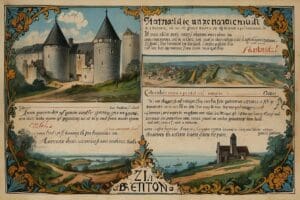Mythical Voyages: The Immram Tales of Irish Literature and Their Enduring Legacy
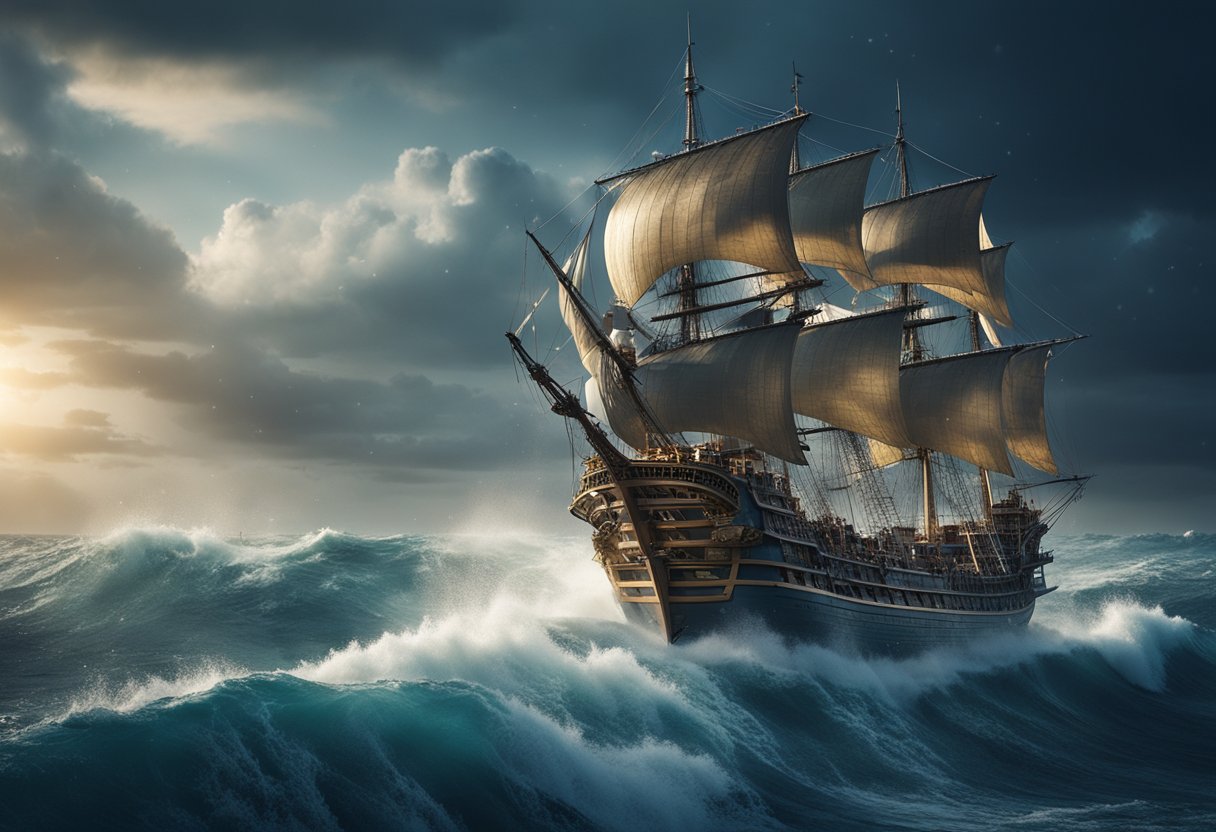
Updated On: April 21, 2024 by Eman Sameh
Immram tales are an enchanting segment of Irish literature, brimming with mythical sea voyages and heroic quests. These narratives, steeped in the lore of the Emerald Isle, lead us to an exploration of mystical islands and otherworldly realms. Remarkable for their rich blend of adventure and spirituality, Immram tales offer a unique literary experience that draws from Ireland’s robust storytelling tradition.
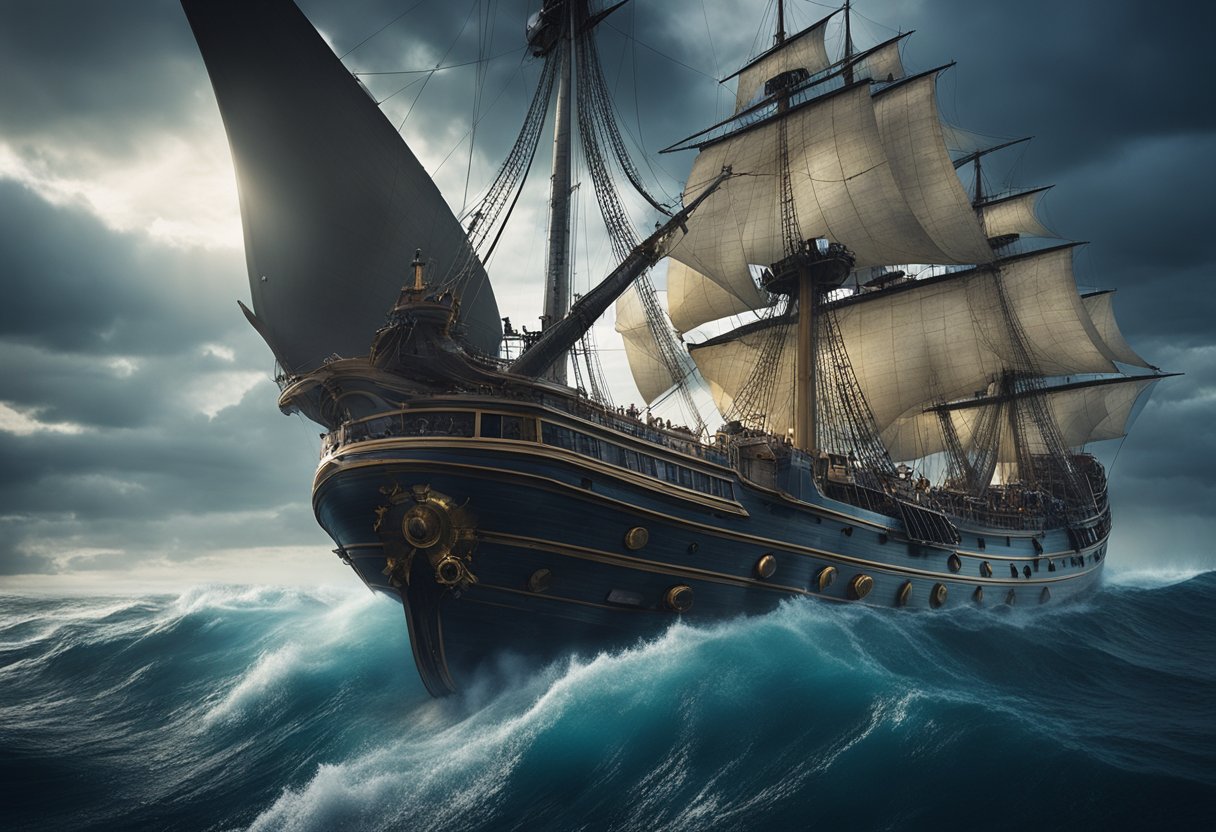
They unfold with notable heroes embarking on perilous journeys across the sea, often to the Otherworld, searching for wisdom, glory, or fulfilment of a divine quest. With their origins anchored in the early Christian era, these tales artfully weave together the strands of Pagan mythology and Christian ideology, reflecting a confluence of beliefs during a transformative period in Irish history.
Origins of Immrama
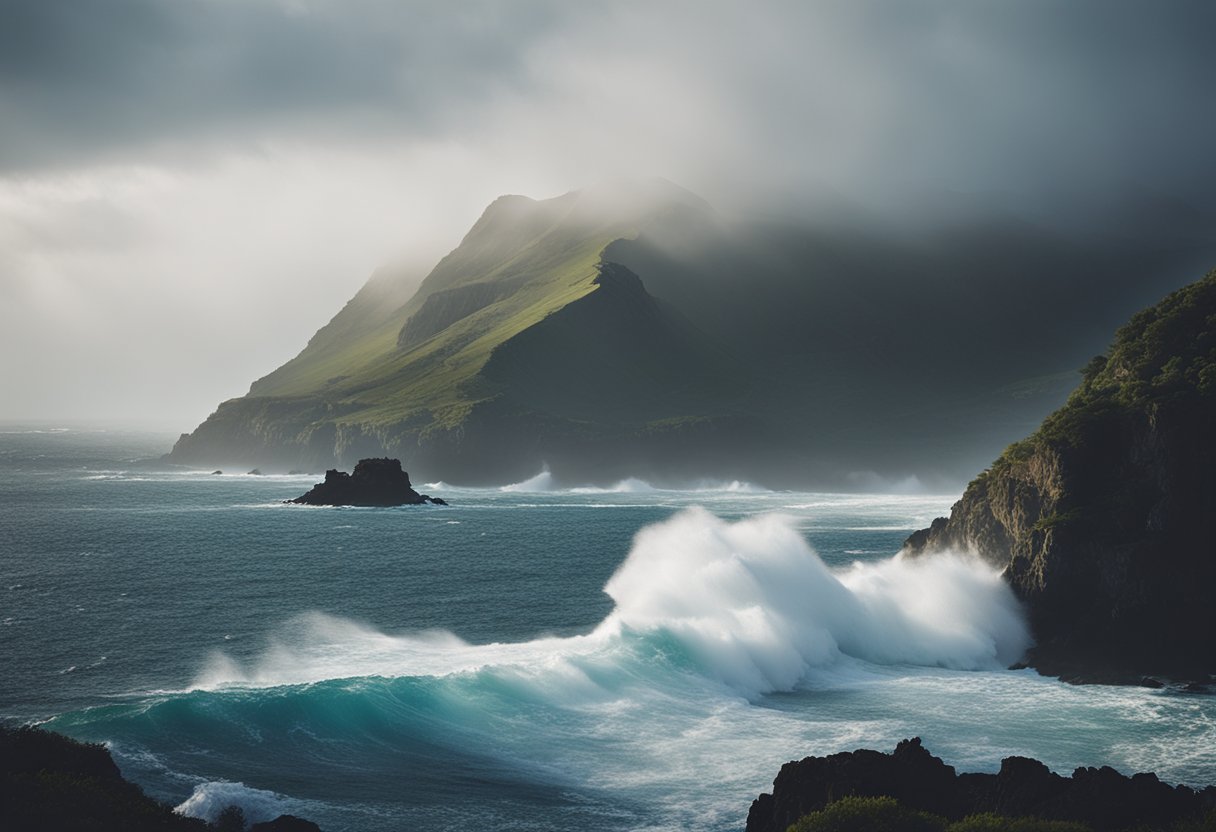
In the rich tapestry of Irish literature, the Immrama—voyage tales—hold a cherished place, offering us a glimpse into the artful intertwining of reality and myth characteristic of Middle Ages storytelling.
Early Sources
Our understanding of Immrama springs from Old Irish manuscripts, themselves the products of a fervent scholarly period. Irish tales from as early as the 7th century illuminate these voyage narratives, which were primarily chronicled by monks. It is said that such chroniclers, sometimes fleeing Continental Europe from invaders during the 5th century, were instrumental in preserving and disseminating Western Europe’s knowledge. In their hands, the Immrama were not just stories but were also a means to extend the influence of Christianity throughout Europe during the early Christian era, signifying their transmutation over time from pagan lore to Christian allegories.
Evolution of Sea Voyage Tales
While the earliest drama centred on physical expeditions, later narratives evolved, symbolising spiritual quests parallel to the soul’s journey towards salvation. They began to embody themes more complex than the mere pursuit of adventure, often entwined with allegorical elements of the Christian faith. Such tales drew a stark contrast to their earlier counterparts, the echtrae, which depicted otherworldly adventures but dwelled less on the spiritual. As the centuries progressed, the transition of early Irish voyage tales into more nuanced forms of literature echoed the broader shifts of thought and belief taking place across Irish literature during the Middle Ages. These voyages, blending stark reality with vivid imaginings, emerged as timeless, their courses charted boldly across the rich sea of our heritage.
Literary Significance
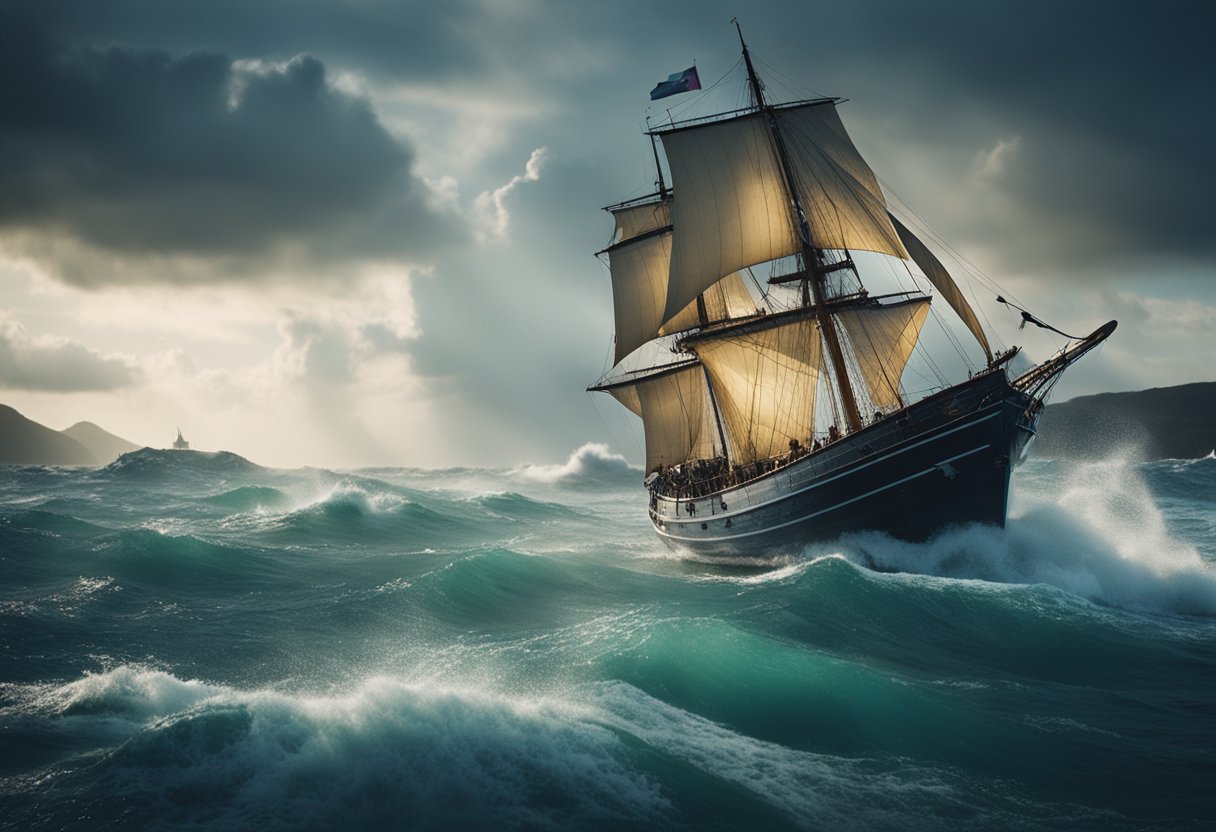
The Immram tales are a captivating facet of Irish literature, embodying the richness of Old Irish narrative through their unique blend of adventure and mysticism. Their storytelling prowess and thematic depth underscore their importance in literary studies.
Genre and Narrative Structure
The Immrama, with its central theme of the voyage, represent a distinct genre in Irish literature. These Old Irish tales intricately weave verse and prose sections, crafting narratives that guide readers through a hero’s journey. The structure of immrama often unfolds in a series of episodic adventures, where the protagonist encounters various otherworldly islands and experiences a tapestry of trials and revelations. These tales, such as the Imram Brain, or The Voyage of Brân, provide invaluable insights into the narrative styles of medieval Irish storytellers and their ability to intertwine the magical with the moral.
Thematic Exploration
In exploring Immrama, we delve into recurring themes that transcend mere adventure. They serve as allegorical reflections on life, death, and the soul’s passage to enlightenment. The Irish Immram capture the complexity of the human psyche within their voyages, as seen in tales like Imram Brain and Maeldúin’s journey. Themes of eternal youth, paradise, and divine judgment are juxtaposed against the harshness of mortal existence, revealing the Immrama’s dual function as both entertainment and didactic literature. Through these narratives, medieval Irish authors examined existential questions, embedding a depth of meaning that has ensured the enduring legacy of the Immrama within the broader context of world literature.
Key Immram Tales
Immram tales are a vital part of Irish maritime lore, focusing on sea voyages and the adventures of their protagonists. These stories blend elements of myth and the supernatural with the physical journey, presenting a rich tapestry of narrative tradition.
The Voyage of Bran
Immram Brain, also known as The Voyage of Bran, is a seminal work in the Immram tradition. It recounts the story of Bran mac Febail’s awe-inspiring journey to a mystical otherworld after being enticed by a woman from the land of women. His voyage is filled with enchanting music that lulls him into a magical state of consciousness, transporting him to realms beyond ordinary existence.
The Voyage of Máel Dúin
The Voyage of Máel Dúin is another central narrative in which protagonist Máel Dúin embarks on a perilous quest to seek vengeance for his father’s murder. Guided by a Druid’s advice, his journey across mystical islands becomes transformative, filled with wonder, enchantment, and otherworldly encounters that challenge the norms of reality.
The Voyage of the Uí Chorra
Lesser-known but equally fascinating is The Voyage of the Uí Chorra. This Immram is a complex tapestry involving the Uí Chorra kin and their adventurous expedition, which echoes earlier stories through its structure and thematic content. Their narrative helps us understand the genre’s broader themes and the cultural significance of such voyages in Irish literary tradition.
Navigatio Sancti Brendani
Unlike the earlier tales centred on mythic heroes, Navigatio Sancti Brendan focuses on Saint Brendan, a historical figure and ecclesiastic. His voyage is a spiritual odyssey, undertaken with a community of monks, symbolising a narrative fusion of Christian faith and Irish narrative traditions. The text blends traditional Immram elements with ecclesiastical motifs and has become an exemplar of the transcendent potential of such spiritual voyages.
Heroes and Protagonists

The Immram tales, with their rich narratives woven into Irish literature, present an array of heroes whose voyages to otherworldly realms encapsulate the essence of Irish mythological storytelling. These protagonists embody bravery and a relentless pursuit of purpose, navigating both physical and spiritual journeys that have captivated readers through the ages.
Bran Son of Febal
Bran, an esteemed figure in Irish mythology, is at the heart of one of the most notable Immram tales, the Voyage of Bran Son of Febal. His journey transcends mere nautical exploration; it is a profound odyssey to the enchanted lands where gods and unearthly creatures dwell. His encounters throughout the voyage serve as profound allegories, reflecting the intricate web of Celtic spirituality and the interplay between this world and the next.
Máel Dúin
Máel Dúin, the protagonist of the Immram Curaig Mael Dúin, embarks on a perilous quest born of personal vendetta—to seek vengeance for his father’s murder. His narrative is powerful and driven by a strong emotional core, which allows us to explore universal themes of forgiveness, redemption, and the uncertain nature of humanity. As one of the longest Immrama, Máel Dúin’s story is fundamental to understanding the depth and evolution of the Immram as a literary form.
Other Immram Heroes
Beyond Bran and Máel Dúin, the Immram genre features an array of other heroes whose tales are lesser-known but equally integral to the lore’s tapestry. Each of these Irish heroes, though not always as widely recognised, contributes unique perspectives to the understanding of heroism and the fantastical voyage motif. These stories showcase the breadth of the Immram tradition, expanding our appreciation for the rich narrative diversity within Celtic legends.
Theological Influences
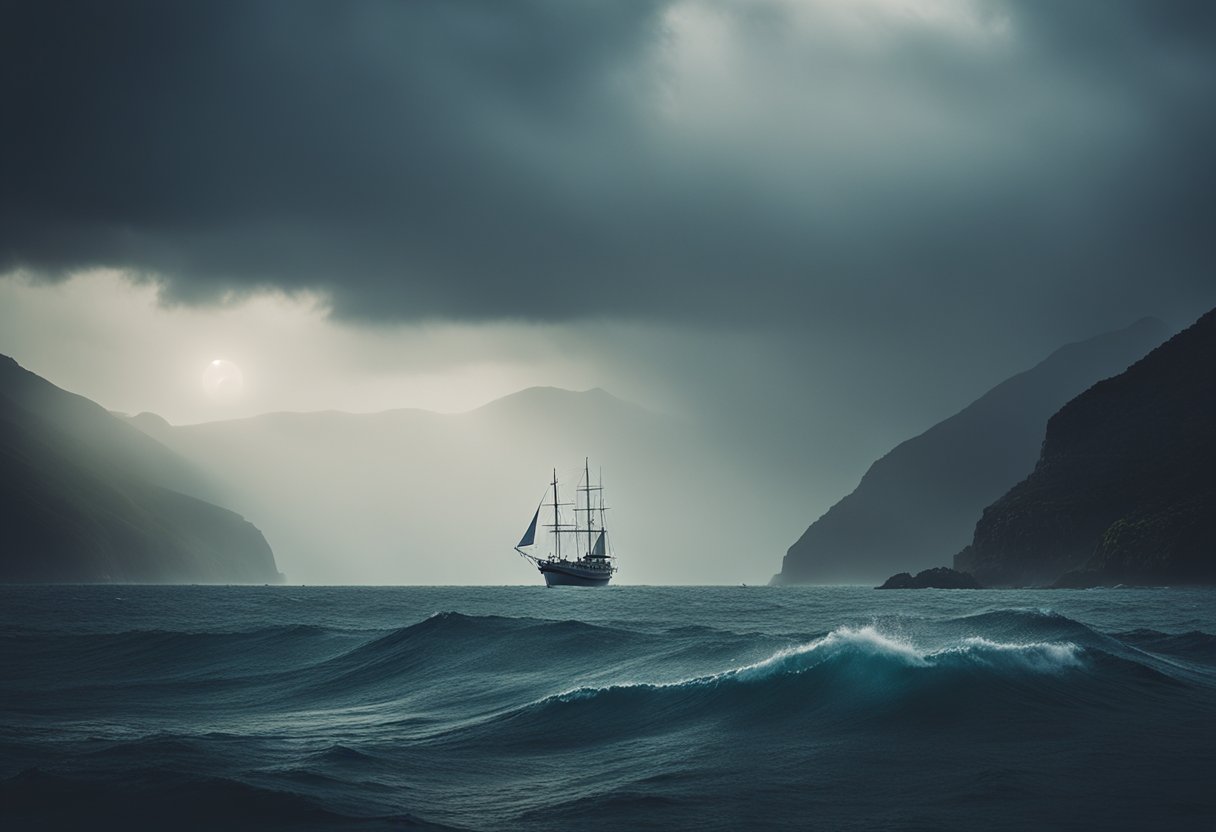
In the rich tapestry of early Irish Christian literature, the Immram tales hold a special place, weaving together Christian doctrine with traditional Irish mythological motifs. Here, we explore the complex interplay of theological influences.
Christian Elements
The Immram, or voyage tales, typically feature monks and other Christian figures embarking on sea journeys that mirror spiritual quests. One of the most distinguished is the Voyage of St. Brendan, which is laden with Christian elements. It narrates the journey of St. Brendan and his companions as they seek the Promised Land of the Saints. Throughout their travels, Christian virtues such as faith and piety are tested and exalted, serving not only as adventure tales but also as allegories of spiritual enlightenment. The Church, acting as a guiding force, is often depicted through divine intervention or the appearance of heavenly messengers, reinforcing the Christian worldview.
Syncretism with Paganism
Conversely, the Immram narratives are remarkable for their syncretism with Paganism. Even as Christianity became more prevalent in Ireland, traditional Irish mythological elements were interwoven into these stories, creating a unique cultural amalgamation. Pagan gods and otherworldly realms, such as the Land of Women in Imram Brain, are depicted alongside Christian themes. This blending of beliefs reflects the transition of Irish society from pagan to Christian, showcasing the Church’s ability to adapt and weave new religious narratives with longstanding cultural traditions. Thus, within the same tale, we encounter Christian morals and symbolism alongside a backdrop painted with Ireland’s rich, mythical heritage.
Supernatural Elements
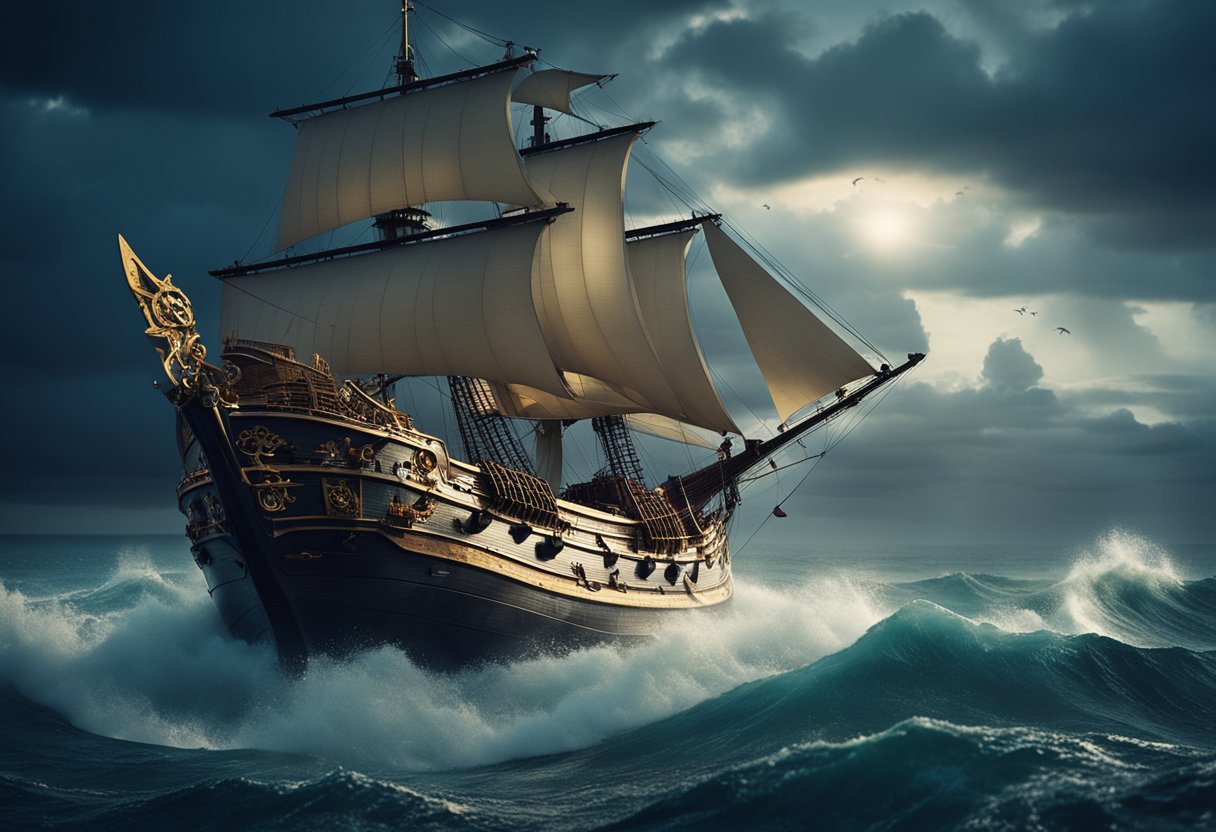
In the rich tapestry of Irish literature, the Immram tales are distinct for weaving a world where the natural and the supernatural coalesce. These narratives are not mere fantasies; they’re intrinsic to understanding the cultural and mythological ethos of the Irish Otherworld.
The Otherworld
The concept of the Otherworld permeates Immram tales, portraying it as a realm distinct from our own yet accessible through mystical voyages. Within these stories, the Otherworld, exemplified by Tír na nÓg and Mag Mell, is a paradigm of idyllic existence, free from the bounds of time and suffering that mark the human condition.
- Tír na nÓg: Often associated with youth and beauty, a place where sickness and death are conspicuously absent.
- Mag Mell: Translating to “Plain of Delight,” it symbolises ultimate contentment, often reached by protagonists after surmounting great trials.
These realms are typically reached through extraordinary means, such as navigating across magical oceans or receiving a divine invitation, often symbolised by an enchanted ball of yarn or a guiding hand, weaving the fate of the voyager towards their extraordinary destiny.
Fantastic Creatures and Islands
Immram stories are abundant with fantastic islands and creatures that both charm and challenge the voyagers. These lands are not mere geographic locations; they are metaphors and trials that reflect the inner journey of the characters.
- Islands: Each island encountered is unique, with its own set of trials or gifts, ranging from paradisiacal orchards to lands of perpetual laughter or sorrow.
- Creatures: The voyagers may encounter beings of great wisdom or malevolence, from swarms of ants signifying minutiae and perseverance to serpents embodying danger and deceit.
The tales often employ these elements to mirror the challenges we face in our lives, suggesting that the journey to the Otherworld is as much about self-discovery as it is about exploring the unknown.
Cultural and Historical Context
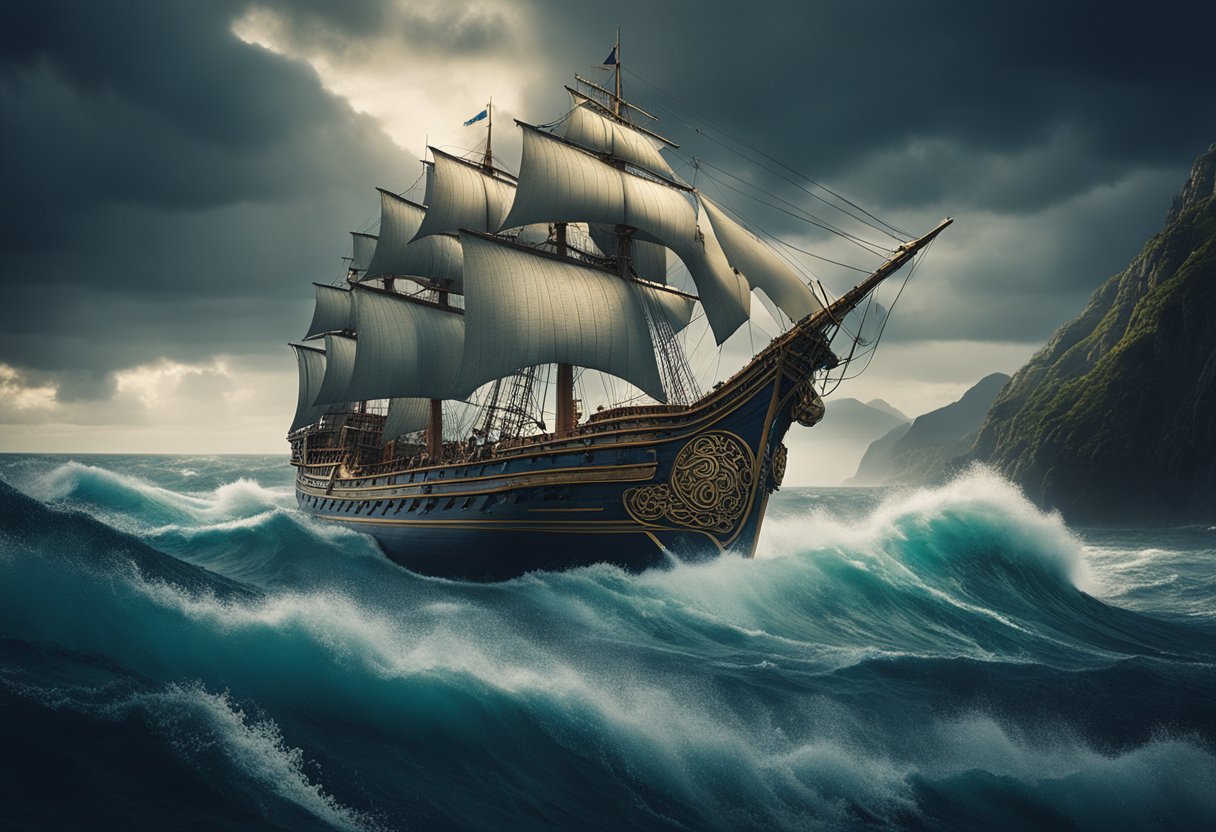
Before exploring the Immram tales, it is vital to understand the tapestry of Irish society and its traditional beliefs, which underpin these narratives.
Irish Social Structure
In Irish literature, the Immram tales reflect a society deeply rooted in a hierarchical framework. Comprising kings, warriors, druids, and commoners, Old Irish society revolved around a structured social order. Our stories often mirrored this hierarchy, with protagonists typically originating from these upper echelons, affording them the status to embark on such esteemed journeys. In these tales, the language is rich with titles and nuances, befitting the social stratifications of the time.
Religious Practices
The introduction of Christianity played a formidable role in the evolution of Irish storytelling. Monastic scribes, often the literate powerhouses of their time, began to weave the Christian ethos into the fabric of our tales. The Immram narratives, therefore, became intricately tinted with religious symbolisms, depicting voyages not only to mystical lands but also towards spiritual, and often sinless, aspirations. The fusion between native spirituality and new religious practices is evident in the tales, showcasing a pilgrimage-like journey resonating with the audience’s beliefs.
Influence on Later Literature
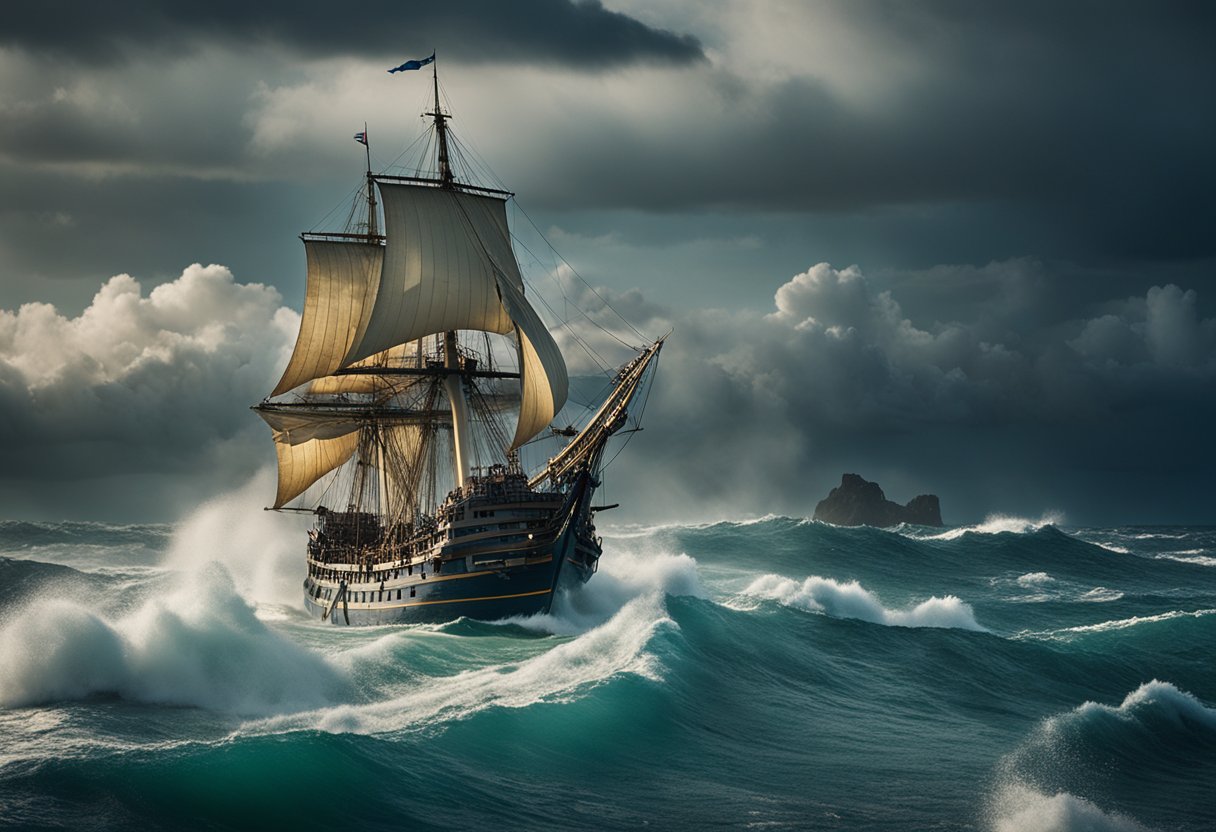
The Immram tales have undeniably left an indelible mark on literary history, influencing narratives that explore fantastical voyages and otherworldly realms. Their impact reaches far beyond the shores of Ireland, resonating in the broader corpus of Western literature.
Medieval to Modern Reception
The circulation of Immram stories from medieval periods into the modern era demonstrates their enduring appeal. Texts such as The Voyage of St. Brendan have maintained their allure, capturing the imagination of readers and writers alike. An instance of this literary fascination is seen in their similarity to Voyage to Iceland narratives by Irish saints, illustrating how these tales have inspired stories of real explorations.
Medieval works, notably the Aeneid and the Odyssey, share thematic parallels with Immram, but the Irish tales bring a distinctive Celtic mystique to the literary exploration of fantastical voyages. As an essential part of Irish literature, Immram stories have been instrumental in nurturing a tradition that finds reflections in subsequent quest-based literature.
Comparative Analysis
In a comparative analysis, scholars often draw parallels between Immram’s themes and later works like Gulliver’s Travels. Jonathan Swift’s novel, for example, echoes the Immram structure of episodic adventures through mystical lands, underscoring a broader European tradition of using literature to navigate the unknown.
The Immram also contribute to the rich tapestry of voyage literature by providing a distinctly Celtic insight into the genre, which has been a point of reference for literary analysis and cultural studies intersecting with narratives of discovery and adventure.
The Role of Women
In this section, we explore the significant presence and depiction of women in the narrative framework of Immram and how gender is represented in these Irish mythical voyages.
Feminine Figures in Immrama
In the tales of Immrama, we often encounter women portrayed as inhabitants of mysterious islands, most notably the Land of Women. The Voyage of Bran exemplifies this with Bran’s encounter with an enchanting realm ruled exclusively by women whom he meets during his odyssey. The women in these sagas are frequently cast as sovereigns of their mystical domains, alluding to an otherworldly power and wisdom that’s both beguiling and formidable.
Representations of Gender
The portrayal of gender in Immram narratives frequently intersects with the supernatural aspects of Irish mythology. It is here that we observe feminine characters who are intrinsically woven into the fabric of the tales, often embodying the mystical and the divine. In these stories, women are seldom mere supportive figures; instead, they often emerge as central pivots around which the plot turns, their actions prompting the protagonist’s journey or challenging them with trials to uncover profound truths about themselves and their worlds.
Through the Immram, we are presented with a rich tapestry of mythical storytelling where women are integral, reflecting their enduring influence within the broader scope of Irish mythology.
The Journey’s End
In exploring Irish Immram tales, the conclusion of these epic narratives often involves a profound return home and a resolution of themes. These elements underscore the fulfilment of destiny and complete the pilgrimage that has defined the protagonist’s journey.
Return Home
In many Immram tales, the hero’s journey concludes with a return to their native land, often after surmounting significant challenges and undergoing personal transformation. This homecoming represents not just a physical return but also the completion of a circular odyssey, which is intrinsic to understanding one’s destiny. As in “The Voyage of Máel Dúin”, the protagonists, after encountering otherworldly realms and surviving perilous events, manage to find their way back, often imbued with newfound knowledge or insights.
Resolution of Themes
The completion of these mythic voyages brings resolution to the overarching themes that are woven throughout the narratives. Themes of fate, destiny, and the search for identity are resolved, often with the protagonist gaining a deeper understanding of their purpose in life. The tales typically conclude, as seen with Bran in “The Voyage of Bran”, where the voyage leaves an indelible mark on the protagonist, forever altering their perspective on life and the world.
Frequently Asked Questions
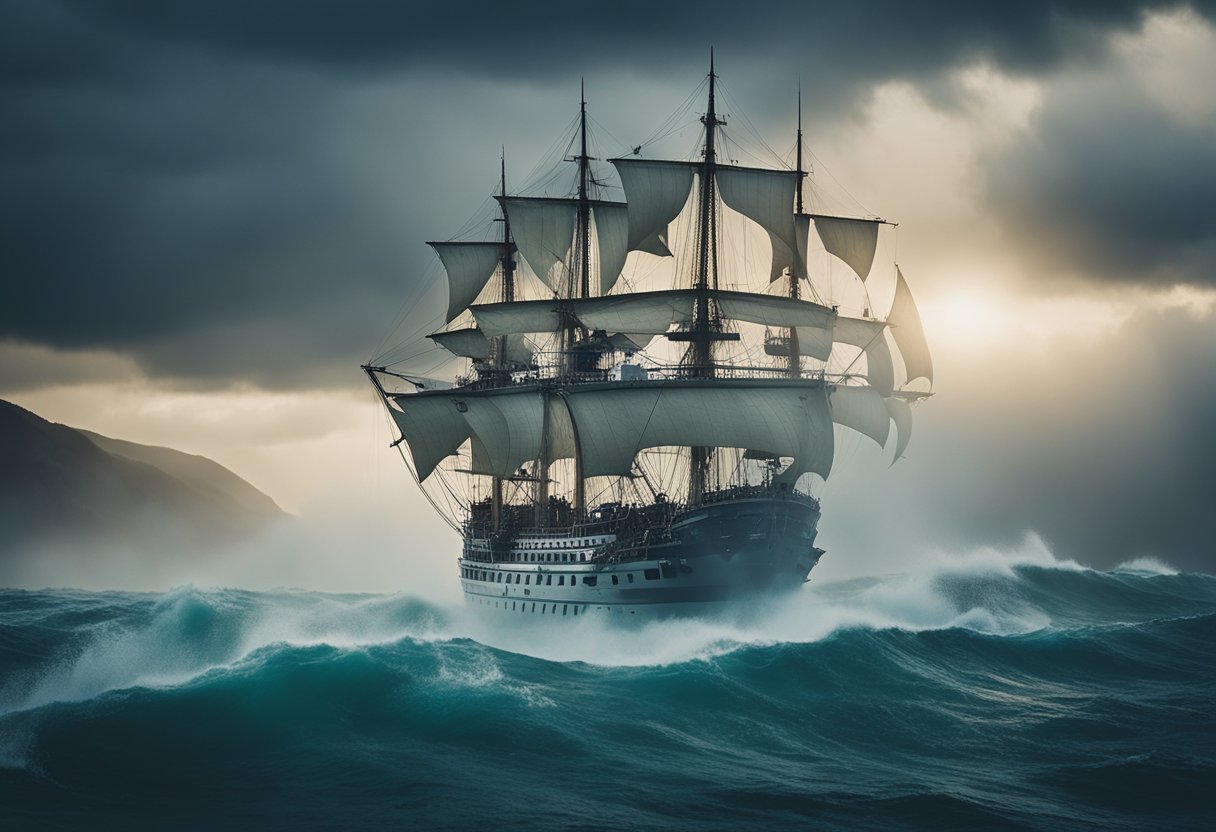
In addressing some of the most intriguing aspects of Immram within Irish literature, we’ve compiled essential information to enhance your understanding of these mythical voyages.
What are the key characteristics of Immram in Irish literature?
Immram tales often involve sea voyages to enchanting otherworlds led by a hero or saint. These narratives typically blend Christian and pagan elements, reflecting a voyage both physical and spiritual.
How does The Voyage of Bran contribute to our understanding of Celtic mythology?
The Voyage of Bran is a profound narrative that weaves Bran’s journey to the otherworld, offering unique insights into Celtic concepts of the cosmos, immortality, and the thin veil between this world and the next.
In what ways do otherworld myths reflect the beliefs of ancient Irish society?
Otherworld myths reflect ancient Irish beliefs in an afterlife and a parallel world, suggesting a society deeply connected to ideas of fate and destiny and a world beyond human perception.
Can you explain the concept of time travel within Celtic mythology?
Time travel in Celtic mythology often manifests as a fluid time where heroes in Immram tales experience otherworldly realms where time operates differently, underscoring the mystical nature of these narratives.
What is the significance of spiritual beings in Irish mythological narratives?
Spiritual beings in these tales embody the moral and natural forces of the world, guiding, testing, and often shaping the protagonists’ destinies in their mythical journeys.
Could you elaborate on the ‘island of the revolving beast’ in the context of Irish legends?
The ‘island of the revolving beast’ is mentioned in tales as a perilous place within the Immram narratives, symbolising challenges that protagonists must overcome during their quests for enlightenment or adventure.





